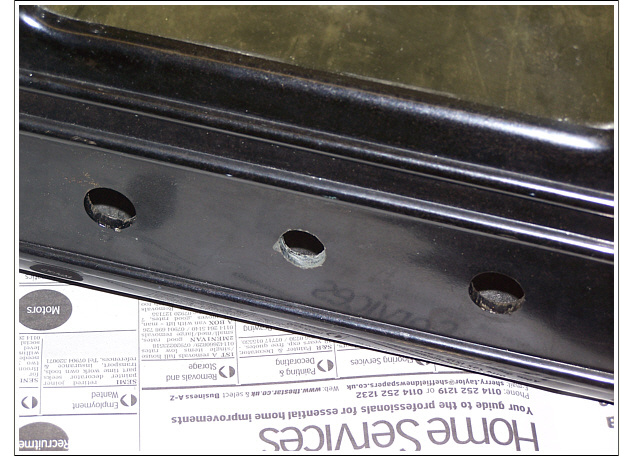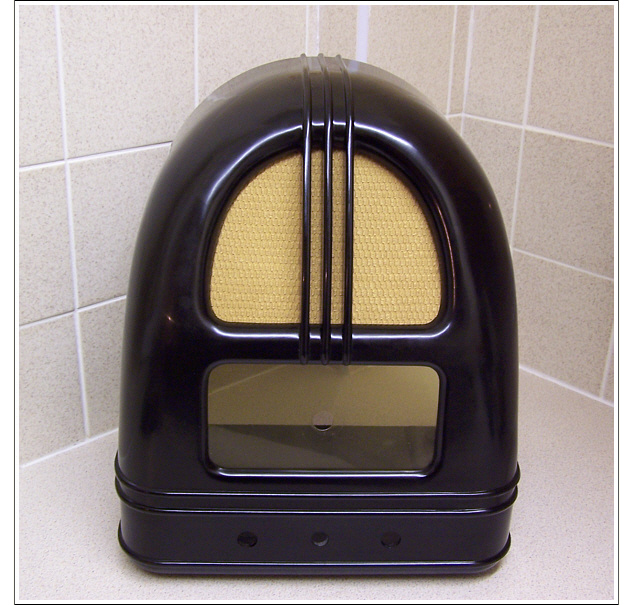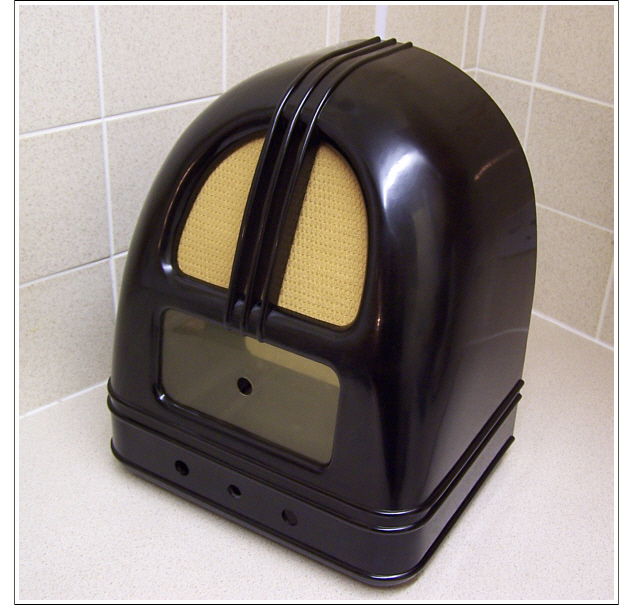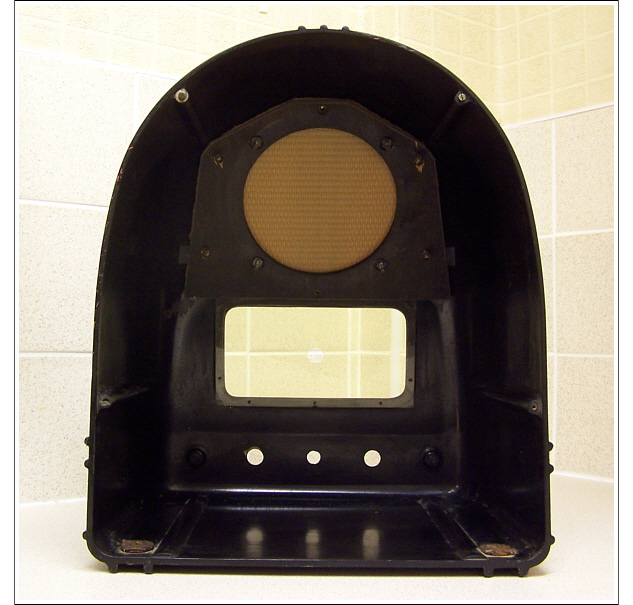
3. Case modification
A couple of issues here. First, the case I had was from a standard Philco 444 model and only had two holes at the bottom for the control spindles whereas the C-537 had three, having an extra control in the middle. And second, I would need to make a replacement baffle-board to mount the speaker and to fit some new grille cloth to.
Drilling a third hole in the bakelite case was fairly straight forward. After accurately marking out a position in-line and equi-distant from the two existing holes, it was a matter of careful drilling starting with a small diameter bit and progressively changing to larger sizes to enlarge the hole.

Making a new baffle-board though was not as easy as I had first assumed. The angle and curve of the case made taking accurate measurements difficult, plus the four mounting holes needed drilling at an angle through the board in order to fit correctly.
I eventually got the measurements necessary by using a sheet of paper carefully pushed on to the mounting threads, taking care to keep the paper taut, and then drawing around the speaker opening whilst holding it in place. This enabled me to make a thin card template with which to cut the baffle and grille cloth accurately to size.
With the aid of the card template I marked out some 3/8 inch plywood, then using an electric jigsaw and an electric drill carefully cut out the speaker aperture and made the mounting holes.
Using some nuts and bolts reclaimed from a baffle-board from an unrelated scrapped set, I was able to make the mounting points for the speaker itself. After a bit of fine tuning here and there I eventually got the board to fit snuggly in the correct position inside the case. At this point I removed the plywood again and gave it a coat of dark-brown matt paint.
I cleaned the accumulated dirt that had been present inside the case when I had obtained it by using foam cleanser and plenty of paper towels. The outside of the case was cleaned in the same fashion, then any minor scuffs, hairline scratches, and the inevitable tiny white spots of paint polished out with 'bake-o-bryte' paste.
When the baffle was dry, I used the card template again to cut a piece of 'Tygon' type material for the grille, and attached it to the board using Vinyl Flooring Tile Adhesive. I find this type of glue ideal for this purpose. I've used it on other restorations with excellent results, and it has the advantage of being water based so it can be easily removed with a damp sponge.


